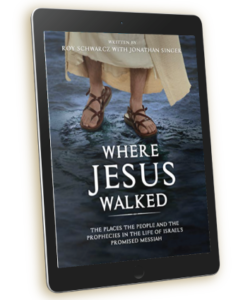Chapters 35-40 ends the story of God’s deliverance and redemption of God’s people. The focus is on the construction of the Tabernacle it may appear redundant since we covered it earlier in the instructions given to Moses in Chaps. 25-31. These chapters discus the actual construction. But God wanted His people to know about this as well. The Tabernacle instructs us how God can be approached, and that blood is a key requirement. This demonstrates God’s holiness; our sinfulness and that sin must be dealt with in His appointed way. It further demonstrates God’s justice in that He punishes sin and also God’s mercy in that He has provided a substitute to bear the punishment in our place. God is specific and precise in how to walk with Him and experience life and blessing. Studying His Word helps us to better walk in His way and abide in Him. These instructions are a call to Israel and His people to obedience.
Moses and the people built the Tabernacle exactly as God designed. Their obedience is deliberately stressed as we see in chaps. 39 and 40. There is a sevenfold repetition that God’s people did exactly “as the LORD commanded Moses.” This repetition follows the events of the golden calf. They had broken the Commandments, the covenant, and their commitment to God. The tabernacle and its instructions tell Israel what is required for God to dwell in their midst. It also foreshadows God’s provision in the New Covenant that both Moses and the prophets spoke of.
Exodus 35:1 All of God’s people were called to have a part in the construction of the Tabernacle to build God’s meeting place on earth. Every believer is to become personally involved in the building of the sanctuary. This is not the sole responsibility of a select few nor the privileged right of the rich and powerful. Those who love God have been called to have a part in building God’s house and Kingdom here on earth (1 Cor 12, 1 Pet 2:4-5).
Exodus 35:2-3 Foundational to the construction of the Tabernacle was the call to keep the Sabbath. The Sabbath was the sign of the covenant between God and man. Israel in its eagerness to have God’s presence among them might be tempted to forget the Sabbath which is more important than the building of the tabernacle. The consequence for disobedience was execution. Even lighting a fire in the home for warmth or cooking was prohibited. Is this still applicable today? God has provided a Sabbath Rest in Messiah, but the principle is this: we must never get so busy that we forget the Lord. God knows us better than we do; Those who break the Sabbath and forget about God tend to slip into a life of sin, rebellion, and lose communion with God.
Exodus 35:4-9 These verses call for tithes and offerings to build the Tabernacle. Why would God want our resources? Because He calls us to be co-workers with Him. Our service and giving is a witness to a lost and dying world. The privilege of giving was given to all. Their offerings were to be given freely, from willing hearts. There was no levy or tax to build the Tabernacle. The same is true today as we build God’s Tabernacle. God does not use a heavy hand laying a financial yoke on us; He leaves giving up to us. He wants us to give freely, willingly, and cheerfully. Here the people gave the needed
Metals, fabrics, animal skins, wood, oil, spices, and the ingredients for incense. They gave the needed stones and gems for the ephod and breast piece for the High Priest. God wants His children to consider our offerings and contributions, as an eternal investment with great dividends. The people gave as requested. They didn’t bring anything that wasn’t on God’s list they gave exactly what He wanted from them.
Exodus 35:10-18 God through Moses called the skilled workers to come and make what was required. The Tabernacle symbolized God’s dwelling among His people and the need to approach God as He required. “Everything the Lord commanded” (v 10) reflects the language of 31:6 (“I have given skill to all the craftsmen to make everything I have commanded you”). This will be reiterated in 39:32 (“The Israelites did everything just as the Lord commanded Moses”). The original tabernacle commands concerning the various component parts were given to Moses in Ex. 25:11–28:43. You might want to look at the Illustrations to help visualize what is described here.
Exodus 35:19 The command to prepare priestly garments was given in detail in chaps. 28-29 summarized here. In 40:13–16 Moses is described as fulfilling the command via the actual investiture of the priests. The workers were to make the Ark, the Mercy Seat and the Inner Veil.
Exodus 35:20-24 The people left Moses and returned to their dwellings to determine what their offerings would be. Apparently, the people responded with an almost unanimous willingness. The offering itself would provide the materials needed for building the tabernacle, the priestly garments, and all related functions. They brought to Moses gold jewelry, brooches, rings, linen, spices for the oil, and related items covered in chapters 35-40.
V 25-29 God also used the talents of the people, such as the women who could spin goat hair into fine linen. The offerings allowed participation utilizing the skills of various Israelites so that they too would have a sense of ownership in setting up the Tabernacle. The sacrificial system would be the center of Jewish life and the center where God’s blessings would rest upon His people.
V 30-35 While God gave Moses the design for the tabernacle, he used others to bring it to reality. To oversee the work, God chose Bezalel, son of Uri, and Oholiab, son of Ahisamach. They likely taught those involved how to build the various parts included for the tabernacle. God’s gave wisdom and guided all who were involved.


